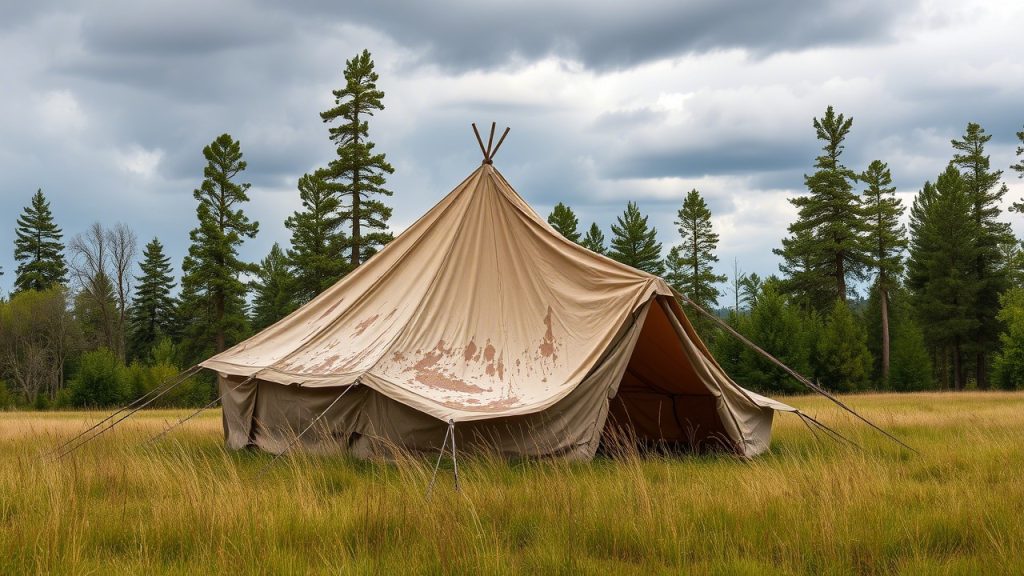Camping is a fantastic way to unwind and soak in the beauty of nature, but nothing ruins a weekend getaway faster than a swarm of mosquitoes, flies, or no-see-ums invading your tent. Bugs can disrupt your sleep, leave itchy bites, and make relaxing at the campsite a chore. A tent designed with robust insect protection ensures you enjoy your outdoor adventure without the constant buzz and bite of unwanted guests.
We’ve curated the 11 best tent picks to stay bug-free in a weekend, focusing on tents with fine mesh netting, sealed seams, and durable designs that keep insects out while maintaining comfort and ventilation. These tents cater to solo backpackers, families, car campers, and everyone in between, ensuring a pest-free experience for your next short trip. We’ve included a detailed table summarizing each tent, real-world examples, expert tips for bug-proofing your campsite, and a thorough FAQ section to address common questions. Let’s dive into the tents that will keep you protected and relaxed on your weekend escape!
Why Bug Protection Matters for Weekend Camping
A weekend camping trip is all about maximizing relaxation in a short timeframe, but bugs can quickly turn a peaceful retreat into a frustrating ordeal. Effective bug protection in a tent offers several benefits:
- Uninterrupted Sleep: Fine mesh keeps insects out, ensuring you rest without bites or buzzing.
- Comfortable Relaxation: A bug-free tent creates a safe space to read, nap, or play games without swatting pests.
- Health and Safety: Protection from mosquitoes and ticks reduces the risk of bites that carry diseases like Lyme or West Nile.
- Enhanced Ventilation: High-quality mesh allows airflow while blocking bugs, keeping the tent cool and fresh.
- Stress-Free Experience: Knowing your tent is a secure sanctuary lets you focus on enjoying nature.
Our selection criteria prioritized tents with tight-woven, no-see-um mesh (small enough to block tiny insects), fully sealed zippers, bathtub floors, and durable materials that withstand weekend use. Below, we detail the 11 best tents for 2025, each excelling in insect protection, ease of use, and overall camping comfort.
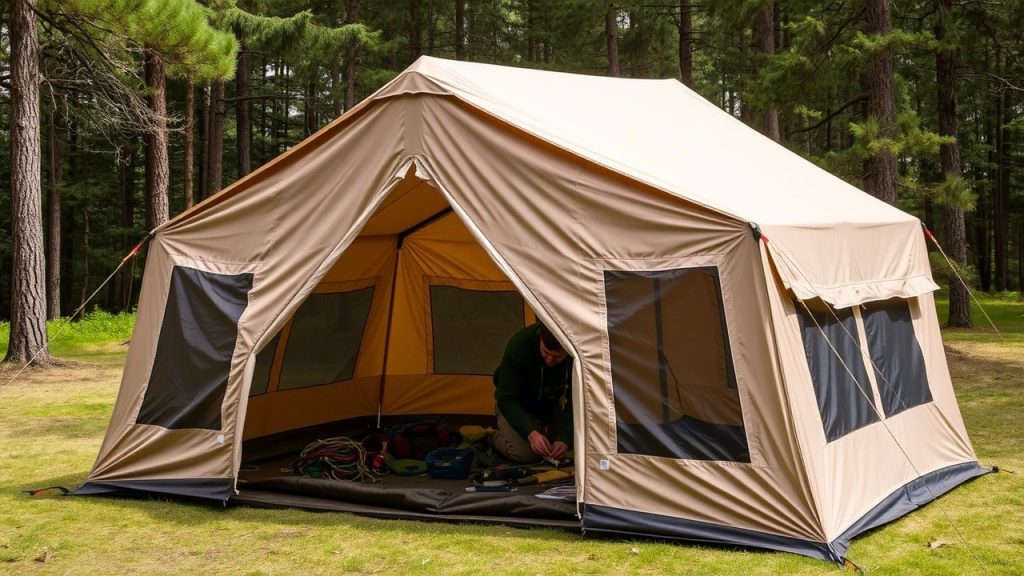
11 Best Tents: At-a-Glance Table
The following table summarizes the 11 tents, their key bug-proof features, capacities, and ideal use cases, making it easy to compare options and choose the best tent for your weekend trip.
| Tent | Key Bug-Proof Features | Capacity | Ideal For |
|---|---|---|---|
| 1. MSR Hubba Hubba NX 2 | No-see-um mesh, stay-dry entry, sealed zippers | 2-person | Backpacking, couples |
| 2. REI Co-op Half Dome SL 3+ | Fine mesh canopy, dual vestibules, taped seams | 3-person | Small groups, backpacking |
| 3. Coleman Skydome 4 | Tight-woven mesh, bathtub floor, WeatherTec system | 4-person | Families, car camping |
| 4. Big Agnes Copper Spur HV UL2 | Micro-mesh walls, storm flaps, high bathtub floor | 2-person | Ultralight backpacking |
| 5. Nemo Aurora Highrise 6 | No-see-um mesh windows, zippered vents, storm flaps | 6-person | Families, car camping |
| 6. Sea to Summit Telos TR2 | Fine mesh roof, adjustable rainfly, sealed entry | 2-person | Backpacking, hot climates |
| 7. The North Face Wawona 6 | Bug-proof vestibule, tight mesh, full-coverage rainfly | 6-person | Groups, car camping |
| 8. Marmot Limestone 4P | No-see-um mesh, dual doors, sealed zippers | 4-person | Small families, mixed camping |
| 9. Kelty Wireless 4 | Fine mesh panels, quick-attach rainfly, bathtub floor | 4-person | Budget campers, car camping |
| 10. Eureka Copper Canyon LX 8 | Tight mesh windows, storm shield zippers, high floor | 8-person | Large groups, car camping |
| 11. ENO SkyLite Hammock Tent | No-see-um bug net, elevated design, breathable mesh | 1-person | Solo backpacking, wooded areas |
Detailed Breakdown of the 11 Best Tents
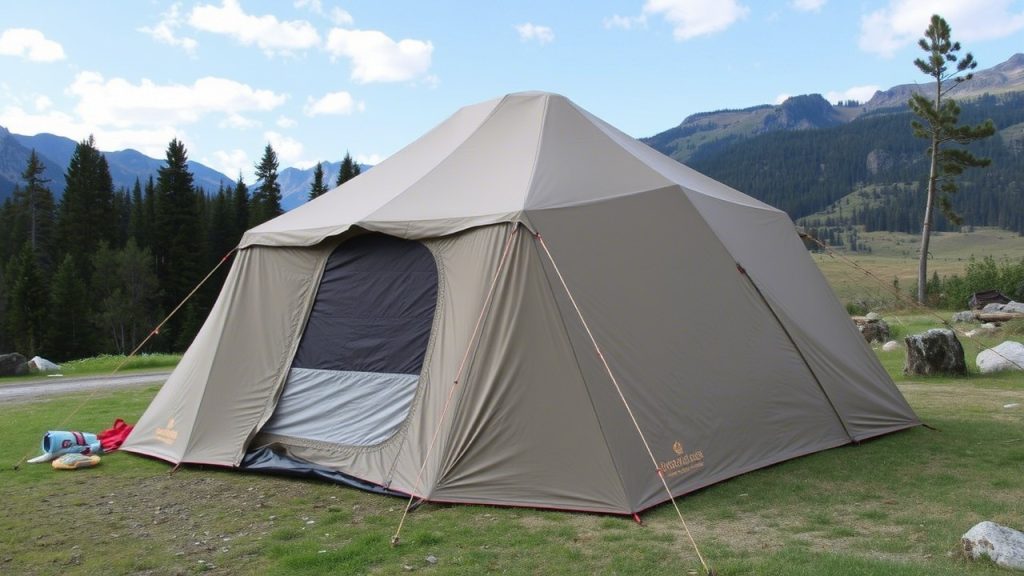
1. MSR Hubba Hubba NX 2
Best for Backpacking
The MSR Hubba Hubba NX 2 is a lightweight 2-person, 3-season tent weighing 3 lbs 12 oz, designed for backpackers who need reliable bug protection on weekend trips.
Key Bug-Proof Features:
- No-see-um mesh canopy blocks tiny insects.
- Stay-dry entry with rain gutters prevents bugs from sneaking in.
- Sealed zippers and taped seams ensure no gaps.
- Bathtub floor with 3000mm HH rating keeps ground-dwelling pests out.
Why It Keeps Bugs Out: The tight-woven mesh is fine enough to stop no-see-ums, while the stay-dry entry and sealed zippers create a fortress-like seal. The high bathtub floor prevents crawling insects from entering, even on uneven terrain.
Real-World Example: A couple backpacking in the Great Smoky Mountains used the Hubba Hubba during mosquito season, sleeping soundly without a single bite thanks to the fine mesh.
Pros:
- Ultralight and packable.
- Excellent ventilation with bug protection.
- Durable for frequent use.
Cons:
- Small for two with gear.
- Premium price.
Pro Tip: Double-check zipper alignment before closing to ensure a tight seal against bugs.
2. REI Co-op Half Dome SL 3+
Best for Small Groups
The REI Co-op Half Dome SL 3+ is a 3-person, 3-season tent with a 43.6-square-foot floor, offering a balance of space and portability for small groups.
Key Bug-Proof Features:
- Fine mesh canopy for full insect protection.
- Dual vestibules keep gear outside, reducing entry points.
- Taped seams and sealed zippers block gaps.
- Bathtub floor with raised edges.
Why It Keeps Bugs Out: The fine mesh canopy provides 360-degree protection, while dual vestibules allow gear storage outside, minimizing bug entry during access. The sealed zippers and taped seams ensure no crevices for insects to exploit.
Real-World Example: A trio camping in Shenandoah National Park praised the Half Dome SL for keeping black flies out, allowing them to relax without constant swatting.
Pros:
- Spacious for 3 people.
- Lightweight for backpacking (5 lbs 5 oz).
- Easy setup with hubbed poles.
Cons:
- Vestibules are smaller than some competitors.
- Not ideal for tall campers.
Pro Tip: Store food and scented items in bear bags away from the tent to avoid attracting bugs.
3. Coleman Skydome 4
Best Budget Family Tent
The Coleman Skydome 4 is a 4-person, 3-season tent with a 63-square-foot floor, offering affordable bug protection for family car camping.
Key Bug-Proof Features:
- Tight-woven mesh ceiling and windows.
- Bathtub floor with WeatherTec welded corners.
- Pre-attached rainfly with storm flaps over zippers.
- Quick setup reduces exposure time.
Why It Keeps Bugs Out: The tight mesh blocks mosquitoes and flies, while the bathtub floor prevents ground insects from creeping in. The storm flaps cover zippers, ensuring no gaps during entry. Its fast setup (under 5 minutes) minimizes the time bugs can enter during pitching.
Real-World Example: A family at a lakeside campground in Michigan used the Skydome 4, enjoying bug-free evenings despite heavy mosquito activity near the water.
Pros:
- Affordable and spacious.
- Quick setup for beginners.
- Decent ventilation.
Cons:
- Partial rainfly may leak in heavy rain.
- Heavier (13 lbs 8 oz) for backpacking.
Pro Tip: Apply a citronella-based repellent around the tent’s base to deter crawling insects.
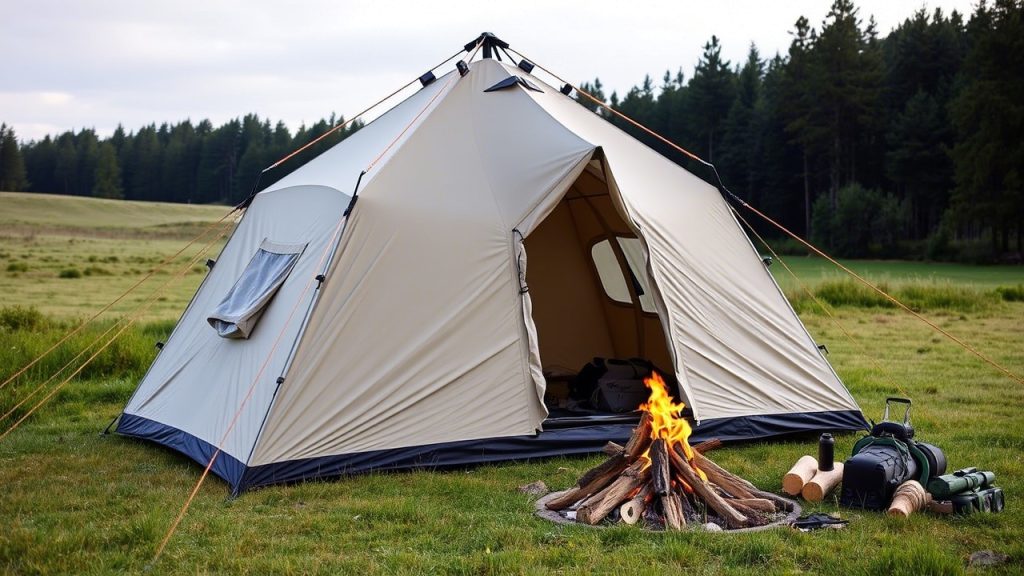
4. Big Agnes Copper Spur HV UL2
Best for Ultralight Backpacking
The Big Agnes Copper Spur HV UL2 is an ultralight 2-person, 3-season tent weighing 3 lbs 2 oz, designed for backpackers who prioritize bug protection and portability.
Key Bug-Proof Features:
- Micro-mesh walls for maximum insect resistance.
- Storm flaps over zippers and high bathtub floor.
- Sealed seams and dual vestibules.
- Quick setup with hubbed poles.
Why It Keeps Bugs Out: The micro-mesh is fine enough to block even the smallest no-see-ums, while the high bathtub floor and storm flaps create an impenetrable barrier. Dual vestibules keep gear outside, reducing bug entry points.
Real-World Example: A hiker in the Everglades used the Copper Spur during peak mosquito season, staying bite-free thanks to the micro-mesh and sealed design.
Pros:
- Ultralight and packable.
- Excellent ventilation with bug protection.
- Spacious for its weight.
Cons:
- Expensive.
- Tight for two with gear.
Pro Tip: Use a groundsheet under the tent to protect the floor and further deter ground insects.
5. Nemo Aurora Highrise 6
Best for Family Comfort
The Nemo Aurora Highrise 6 is a 6-person, 3-season tent with an 83-square-foot floor and a 77-inch peak height, offering a spacious, bug-proof retreat for family car camping.
Key Bug-Proof Features:
- No-see-um mesh windows and ceiling.
- Zippered vents with storm flaps.
- Bathtub floor with raised edges.
- Full-coverage rainfly seals entry points.
Why It Keeps Bugs Out: The no-see-um mesh blocks tiny insects, while zippered vents and storm flaps ensure secure airflow without gaps. The full-coverage rainfly and bathtub floor create a robust barrier against bugs, even in humid conditions.
Real-World Example: A family camping in the Adirondacks used the Aurora Highrise, enjoying bug-free card games inside despite swarms of black flies outside.
Pros:
- Tall and roomy for standing.
- Excellent ventilation.
- Durable materials.
Cons:
- Heavy (18 lbs 8 oz).
- Higher price for a 6-person tent.
Pro Tip: Keep vestibule zippers closed when not in use to prevent bugs from entering the gear storage area.
6. Sea to Summit Telos TR2
Best for Hot Climates
The Sea to Summit Telos TR2 is a 2-person, 2-season tent weighing 3 lbs 10 oz, designed for backpackers in warm, buggy environments.
Key Bug-Proof Features:
- Fine mesh roof and walls for 360-degree protection.
- Adjustable rainfly with sealed entry.
- High bathtub floor with taped seams.
- Tension Ridge pole system for quick setup.
Why It Keeps Bugs Out: The fine mesh roof and walls block even the smallest insects, while the sealed entry and high bathtub floor prevent ground or rain-related bug intrusions. The quick setup reduces exposure time during pitching.
Real-World Example: A couple in Florida’s Ocala National Forest used the Telos TR2, staying cool and bug-free despite humid, mosquito-heavy conditions.
Pros:
- Lightweight and breathable.
- Quick setup (~3 minutes).
- Excellent for hot weather.
Cons:
- Expensive.
- Limited space for gear.
Pro Tip: Apply permethrin to the rainfly (following safety guidelines) for extra bug deterrence.
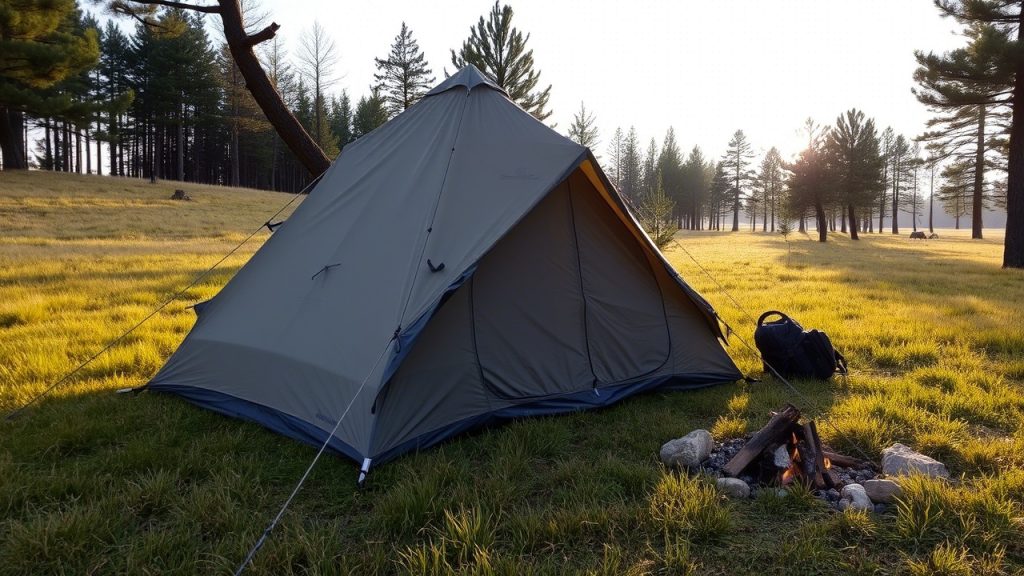
7. The North Face Wawona 6
Best for Group Camping
The The North Face Wawona 6 is a 6-person, 3-season tent with an 86-square-foot floor, offering robust bug protection and a spacious gear vestibule for groups.
Key Bug-Proof Features:
- Tight mesh canopy and windows.
- Bug-proof vestibule with sealed zippers.
- Full-coverage rainfly with 1200mm HH rating.
- Bathtub floor with 1500mm HH rating.
Why It Keeps Bugs Out: The tight mesh and sealed vestibule create multiple layers of protection, while the full-coverage rainfly and bathtub floor block ground insects. The large vestibule keeps gear outside, reducing bug entry during access.
Real-World Example: A group in the Boundary Waters used the Wawona 6, keeping mosquitoes out while storing fishing gear in the bug-proof vestibule.
Pros:
- Spacious with large vestibule.
- Durable and weather-resistant.
- Good ventilation.
Cons:
- Heavy (20 lbs 15 oz).
- Setup takes longer (~5 minutes).
Pro Tip: Use a small brush to clean mesh after each trip to maintain airflow and bug protection.
8. Marmot Limestone 4P
Best for Versatility
The Marmot Limestone 4P is a 4-person, 3-season tent with a 59.7-square-foot floor, offering bug protection for small families or mixed camping styles.
Key Bug-Proof Features:
- No-see-um mesh canopy and doors.
- Dual doors with sealed zippers.
- Bathtub floor with 3000mm HH rating.
- Included footprint for extra ground protection.
Why It Keeps Bugs Out: The no-see-um mesh blocks tiny insects, while dual doors reduce congestion and bug entry. The high bathtub floor and included footprint create a strong barrier against ground pests.
Real-World Example: A family in the Blue Ridge Mountains used the Limestone 4P, staying bug-free during a humid weekend with heavy firefly activity.
Pros:
- Spacious for 4 people.
- Durable and weather-resistant.
- Easy setup with color-coded poles.
Cons:
- Heavier (11 lbs 11 oz) for backpacking.
- Smaller vestibules.
Pro Tip: Keep doors zipped when not in use, even during the day, to prevent bugs from sneaking in.
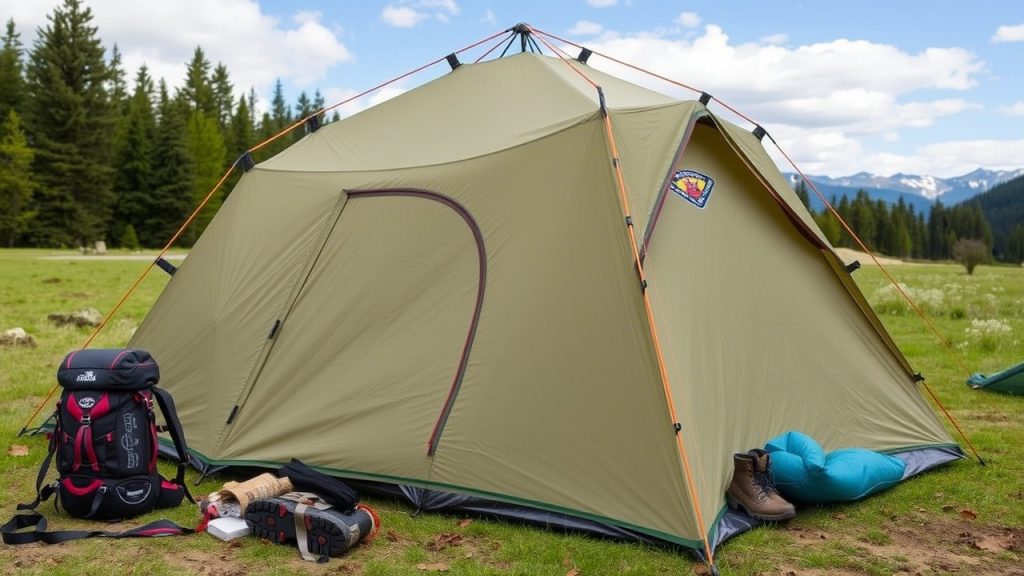
9. Kelty Wireless 4
Best Budget Option
The Kelty Wireless 4 is a 4-person, 3-season tent with a 59-square-foot floor, offering affordable bug protection for car campers.
Key Bug-Proof Features:
- Fine mesh panels on walls and ceiling.
- Quick-attach rainfly with storm flaps.
- Bathtub floor with raised edges.
- Sealed zippers for secure entry.
Why It Keeps Bugs Out: The fine mesh blocks mosquitoes and no-see-ums, while the quick-attach rainfly and storm flaps seal entry points. The bathtub floor prevents ground insects from entering, even in damp conditions.
Real-World Example: A group of friends camping in Wisconsin used the Wireless 4, enjoying bug-free evenings despite nearby wetlands teeming with mosquitoes.
Pros:
- Affordable and spacious.
- Easy setup (~5 minutes).
- Good ventilation.
Cons:
- Less durable than premium tents.
- Heavier (13 lbs 7 oz).
Pro Tip: Spray mesh with a non-toxic insect repellent before your trip to enhance protection.
10. Eureka Copper Canyon LX 8
Best for Large Groups
The Eureka Copper Canyon LX 8 is an 8-person, 3-season tent with a 130-square-foot floor and a 7-foot peak height, ideal for large groups seeking bug protection.
Key Bug-Proof Features:
- Tight mesh windows and doors.
- Storm shield zippers with full coverage.
- High bathtub floor with sealed seams.
- Room dividers for private zones.
Why It Keeps Bugs Out: The tight mesh blocks insects of all sizes, while storm shield zippers ensure no gaps during entry. The high bathtub floor and sealed seams prevent ground pests, and dividers create bug-free sleeping zones.
Real-World Example: A scout troop in the Ozarks used the Copper Canyon LX 8, keeping flies and ticks out while maintaining a cool, airy interior.
Pros:
- Huge interior for groups.
- Tall for standing and moving.
- Durable construction.
Cons:
- Heavy (25 lbs 4 oz).
- Setup takes longer (~10 minutes).
Pro Tip: Assign one person to monitor zippers during entry to ensure they’re fully closed.
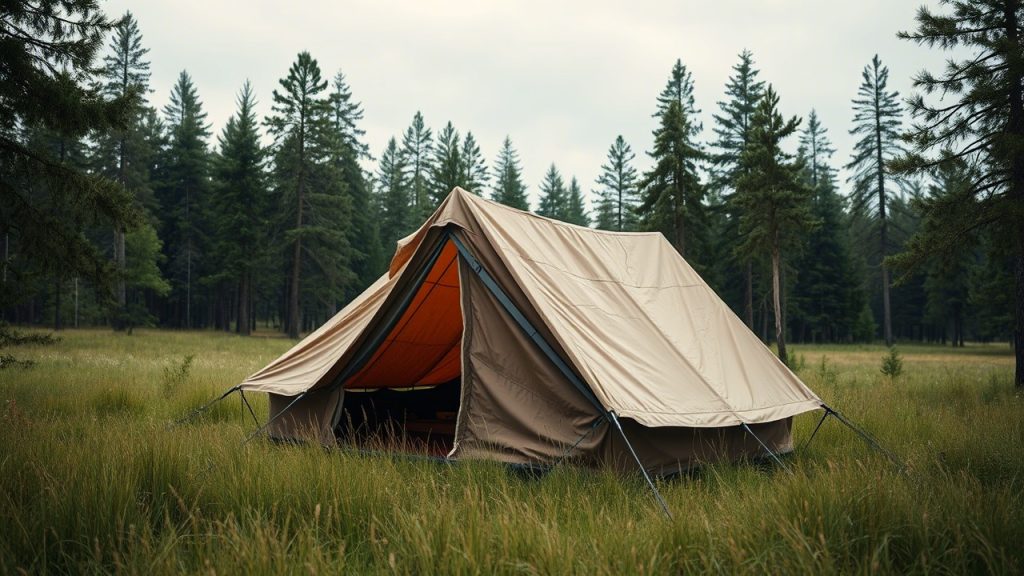
11. ENO SkyLite Hammock Tent
Best for Solo Backpacking
The ENO SkyLite Hammock Tent is a 1-person, 3-season setup weighing 2 lbs 12 oz, offering elevated bug protection for solo campers in wooded areas.
Key Bug-Proof Features:
- No-see-um bug net with full enclosure.
- Breathable mesh for ventilation.
- Elevated design avoids ground insects.
- Waterproof rainfly seals the setup.
Why It Keeps Bugs Out: The no-see-um bug net creates a fully enclosed sleep space, while the elevated design keeps you above ground-dwelling pests. The breathable mesh ensures airflow without compromising protection.
Real-World Example: A solo hiker in the Pacific Northwest used the SkyLite, sleeping bite-free despite heavy mosquito activity near a river.
Pros:
- Lightweight and portable.
- Gentle rocking promotes sleep.
- Excellent for hot, buggy areas.
Cons:
- Requires trees for setup.
- Limited gear storage.
Pro Tip: Hang a bug-repellent strip near the hammock’s entry for added protection.
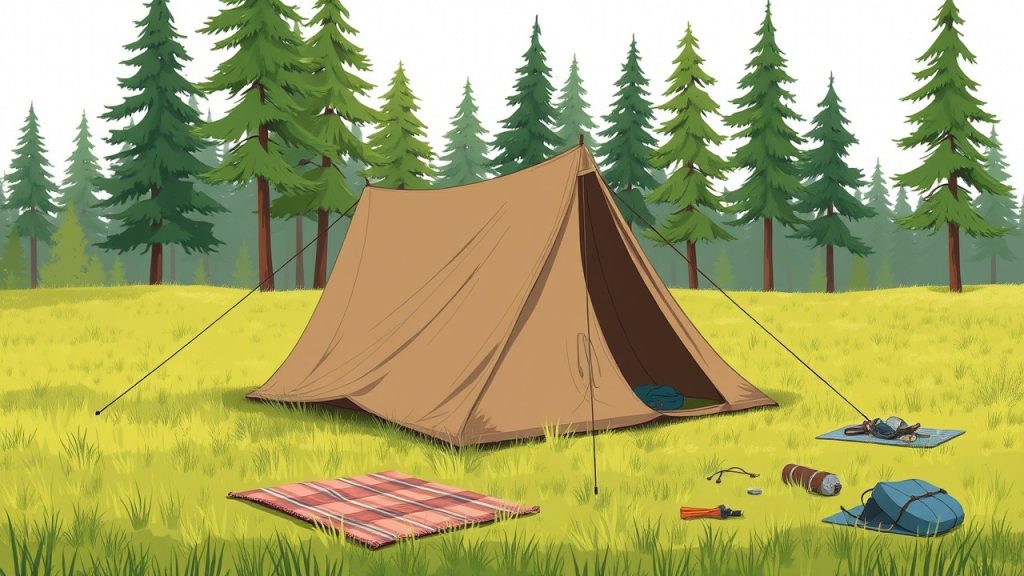
Tips for Staying Bug-Free While Camping
To maximize your tent’s bug protection and enjoy a pest-free weekend, follow these expert tips:
- Choose a Bug-Free Campsite: Avoid pitching near standing water, dense vegetation, or garbage areas, which attract insects. Opt for open, breezy sites.
- Seal All Entries: Keep zippers fully closed, even when inside the tent, and check for gaps in the rainfly or floor.
- Use Repellents Safely: Apply DEET or picaridin-based repellents to skin and permethrin to gear (not skin) for extra deterrence. Follow safety guidelines.
- Store Food Properly: Keep food, trash, and scented items (e.g., toiletries) in sealed containers or bear bags, stored 100 feet from your tent.
- Wear Protective Clothing: Long sleeves, pants, and socks reduce exposed skin, especially at dusk when mosquitoes are active.
- Set Up a Screen Room: For daytime relaxation, use a screen room (e.g., Coleman Instant Screenhouse) to create a bug-free lounge area.
- Clean Mesh Regularly: Brush off dirt or debris from mesh panels to maintain airflow and prevent tears that could let bugs in.
- Use Citronella or Coils: Place citronella candles or mosquito coils (in safe holders) around the campsite, away from the tent, to repel insects.
- Check Gear Before Entry: Inspect backpacks or clothing for hitchhiking bugs before bringing them into the tent.
Frequently Asked Questions
1. What makes a tent bug-proof?
A bug-proof tent features tight-woven, no-see-um mesh to block tiny insects, sealed zippers, taped seams, and a high bathtub floor to prevent ground entry. Storm flaps and full-coverage rainflies add extra protection.
2. Can I use a regular tent in buggy areas?
Regular tents may offer some protection, but those without fine mesh or sealed zippers can let bugs in. Choose a tent with no-see-um mesh and a bathtub floor for buggy environments.
3. How does mesh affect ventilation in bug-proof tents?
High-quality mesh, like no-see-um or micro-mesh, allows ample airflow while blocking insects, keeping the tent cool and fresh. Tents with large mesh panels, like the Sea to Summit Telos TR2, excel in ventilation.
4. Are hammock tents effective against bugs?
Yes, hammock tents like the ENO SkyLite with no-see-um bug nets provide excellent protection, especially since their elevated design avoids ground insects. Ensure the net is fully sealed.
5. How do I prevent bugs from entering during setup?
Set up quickly, keep the tent zipped during pitching, and shake out the tent body before assembling to remove any insects. Pitch in a breezy, open area to deter bugs.
6. What’s the best tent size for bug protection?
Choose a tent sized for your group plus extra space for gear (e.g., a 4-person tent for 2-3 people). Larger tents like the Eureka Copper Canyon LX 8 offer more sealed space for groups.
7. How do I maintain my tent’s bug-proof features?
Clean mesh with a soft brush after each trip, store the tent dry to prevent mold, and check zippers and seams for damage. Patch small mesh tears with repair tape.
8. Can I use insect repellent inside the tent?
Avoid spraying repellents inside, as they can damage fabrics or cause respiratory issues. Apply repellents to skin or gear outside and use citronella-based products around the campsite.
9. Are budget tents like the Kelty Wireless 4 effective against bugs?
Yes, budget tents with fine mesh, sealed zippers, and bathtub floors, like the Kelty Wireless 4, provide solid bug protection, though they may be less durable than premium models.
Conclusion
A bug-free weekend camping trip is entirely achievable with the right tent. The MSR Hubba Hubba NX 2 and Big Agnes Copper Spur HV UL2 are perfect for backpackers, while the Nemo Aurora Highrise 6 and The North Face Wawona 6 suit families and groups. Budget campers will love the Coleman Skydome 4 and Kelty Wireless 4, and solo adventurers can rely on the ENO SkyLite Hammock Tent. The REI Co-op Half Dome SL 3+, Sea to Summit Telos TR2, Marmot Limestone 4P, and Eureka Copper Canyon LX 8 offer versatile options for various needs.
Pair these tents with smart practices—like choosing a breezy campsite, sealing zippers, and storing food properly—to ensure a pest-free experience. Ready to enjoy a bite-free weekend in the great outdoors? Pick one of these tents, pack your gear, and head out for a relaxing, bug-free adventure!

